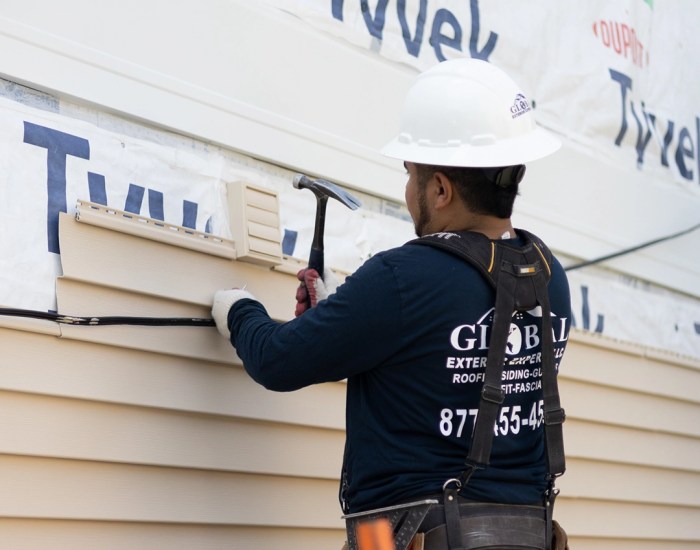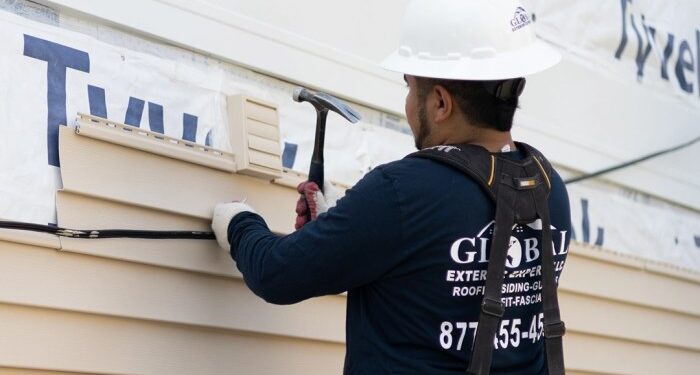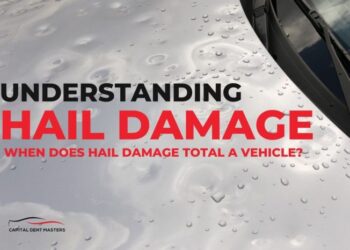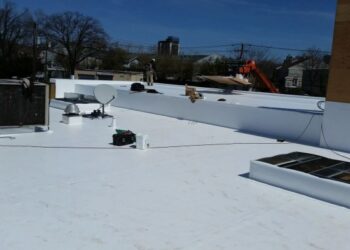Global siding and roofing open the doors to a fascinating journey, shedding light on the intricate world of construction with a focus on quality and innovation. As we delve into the nuances of different materials and roofing systems worldwide, a rich tapestry of trends and sustainability practices emerges, shaping the landscape of the industry.
Introduction to Global Siding and Roofing

Global siding and roofing are essential components in the construction industry, providing protection and structural integrity to buildings worldwide. Quality siding and roofing solutions are crucial for ensuring the durability and safety of structures, regardless of the geographical location or climate conditions.
Importance of Quality Siding and Roofing
- Quality siding and roofing protect buildings from harsh weather conditions such as rain, snow, wind, and UV rays.
- Proper siding and roofing materials enhance energy efficiency and reduce heating and cooling costs.
- Well-maintained siding and roofing improve the overall aesthetic appeal and value of a property.
- Durable siding and roofing materials increase the longevity of buildings, reducing the need for frequent repairs and replacements.
Key Factors Driving Demand for Global Siding and Roofing Solutions
- Rapid urbanization and population growth leading to increased construction activities.
- Stringent building codes and regulations emphasizing the use of high-quality and sustainable construction materials.
- Growing awareness about the importance of environmentally friendly and energy-efficient building practices.
- Advancements in technology and innovation leading to the development of more durable and cost-effective siding and roofing solutions.
Types of Global Siding Materials
When it comes to siding materials used globally, there are several options available, each with its own set of characteristics and benefits.
Wood Siding
- Wood siding is a traditional option that offers a natural and classic look to a building.
- It is versatile and can be painted or stained in various colors.
- However, wood siding requires regular maintenance to prevent rot, mold, and insect damage.
Vinyl Siding
- Vinyl siding is a popular choice due to its affordability and low maintenance requirements.
- It comes in a wide range of colors and styles to suit different architectural designs.
- While durable, vinyl siding can crack or fade over time due to exposure to extreme weather conditions.
Fiber Cement Siding
- Fiber cement siding is a durable option that is resistant to rot, fire, and pests.
- It can mimic the look of wood or masonry at a lower cost and requires minimal maintenance.
- However, fiber cement siding can be heavy and may require professional installation.
Brick Siding
- Brick siding is a timeless and durable option that can last for decades.
- It offers excellent insulation properties and is resistant to fire and pests.
- While brick siding is long-lasting, it can be expensive to install initially.
Stucco Siding
- Stucco siding is a versatile option that can be applied to various surfaces, including concrete, brick, or wood.
- It provides a seamless and customizable finish to the exterior of a building.
- However, stucco siding may require regular maintenance to prevent cracks or water damage.
Roofing Systems Around the World
Roofing systems vary greatly across different regions globally, influenced by factors such as climate, materials availability, and architectural traditions. Understanding the advantages and disadvantages of various roofing materials is crucial in determining the most suitable option for a specific location.
Asphalt Shingles
Asphalt shingles are a popular roofing material in North America due to their affordability, ease of installation, and variety of colors. However, they may not be as durable as other materials, especially in areas prone to extreme weather conditions.
Clay Tiles
Clay tiles are commonly used in Mediterranean countries for their aesthetic appeal and excellent durability. They are resistant to fire and rot, making them a suitable choice for regions with hot and dry climates. However, they can be heavy and may require additional structural support.
Metal Roofing
Metal roofing is gaining popularity worldwide for its longevity, energy efficiency, and recyclability. It is often used in regions prone to heavy snowfall or hurricanes due to its strength and resistance to harsh weather conditions. However, metal roofs can be noisy during rain and may dent easily.
Thatched Roofing
Thatched roofing is a traditional form of roofing found in tropical regions like Southeast Asia and Africa. While aesthetically pleasing and environmentally friendly, thatched roofs require regular maintenance and are more susceptible to fire hazards.
Slate Roofing
Slate roofing is commonly seen in Europe and North America, known for its elegance, durability, and resistance to fire. However, slate roofs are expensive to install and repair, making them less practical for budget-conscious homeowners.
Trends in Global Siding and Roofing
As the construction industry continues to evolve, the trends in global siding and roofing are also changing rapidly. Let's take a look at some of the emerging trends in design, technology, and sustainability practices in the siding and roofing industry worldwide.
Modern Siding and Roofing Designs
Modern siding and roofing designs are now emphasizing sleek and minimalist aesthetics. Clean lines, bold colors, and innovative materials are being used to create a contemporary look for residential and commercial buildings. Additionally, there is a growing trend towards mixed-material siding, combining elements like wood, metal, and fiber cement for a unique and dynamic appearance.
Technology in Siding and Roofing Solutions
The use of technology in modern siding and roofing solutions is revolutionizing the industry. From advanced software for design and planning to drones for aerial inspections, technology is streamlining processes, improving efficiency, and ensuring precision in installation. Additionally, the integration of smart home features like solar panels and sensor-based roofing systems is becoming more common, enhancing energy efficiency and sustainability.
Sustainability Practices in the Industry
Sustainability is a key focus in the global siding and roofing industry. Manufacturers are increasingly using eco-friendly materials, such as recycled metal and sustainable wood, to reduce environmental impact. Green roofing systems, like vegetative roofs and solar shingles, are gaining popularity for their energy-saving benefits and ability to mitigate urban heat island effects.
Moreover, the adoption of sustainable installation practices, such as proper insulation and ventilation, is becoming standard to improve energy efficiency and indoor comfort.
Outcome Summary
In conclusion, the realm of global siding and roofing offers a dynamic blend of tradition and modernity, with a keen eye on environmental impact and technological advancements. From classic designs to cutting-edge solutions, this sector continues to evolve, promising a future that is both functional and aesthetically pleasing.
FAQ Summary
What are the common types of global siding materials used?
Common types include vinyl, wood, fiber cement, and metal, each offering unique benefits in terms of durability and aesthetics.
How does climate influence the choice of roofing systems globally?
Climate plays a crucial role in determining the type of roofing system needed, with factors such as temperature fluctuations and precipitation levels guiding the selection process.
What are some emerging trends in global siding and roofing designs?
Emerging trends include the use of eco-friendly materials, innovative textures, and modular designs that cater to modern architectural preferences.











